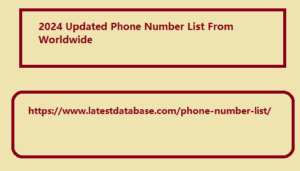In today’s fast-paced world, communication is key. One of the essential features that enhance our communication capabilities is call forwarding. This technology allows users to redirect incoming calls from one number to another, ensuring that important calls are never missed. This article explores the ins and outs of call forwarding, its various types, benefits, and practical applications.
Table of Contents
Call forwarding is a telecommunication feature that allows users to redirect incoming calls to another phone number. Whether it’s a mobile phone, landline, or VoIP line, call forwarding ensures that you can receive calls even when you are not at your primary number. This can be particularly useful in various situations such as traveling, working remotely, or managing business communications.
The feature works seamlessly by routing the incoming call to the designated number, allowing the user to maintain connectivity. Call forwarding can be a lifesaver for busy professionals, parents, and anyone who needs to stay reachable.
Types of Call Forwarding
There are several types of call forwarding 2024 Updated Phone Number List From Worldwide ach designed to cater to different needs and situations. Understanding these types can help users choose the best option for their communication needs.
Unconditional Call Forwarding
Unconditional call forwarding directs all incoming calls to another number without any conditions. This means that every call received on the original number will be forwarded to the designated number, regardless of the caller or the time of the call.
Advantages:
- Ensures that you never miss a call.
- Simple to set up and use.
Disadvantages:
- May lead to missed calls if the forwarded number is unavailable.
- Can incur additional charges, depending on your service provider.
Conditional Call Forwarding
Conditional call forwarding allows users to set specific conditions under which calls will be forwarded. These conditions typically include:
- When busy: Calls are forwarded when Buy Phone Number Data original number is already in use.
- When unanswered: Calls are forwarded if the original number does not answer within a specified number of rings.
- When unreachable: Calls are forwarded if the original number is turned off or out of service.
AdvantagesDisadvantages
Provides flexibility and control over which calls are forwarded.
Helps manage incoming calls based on availability.
Can be more complicated to set up compared to unconditional forwarding.
Requires users to remember the conditions set for forwarding.
Selective Call Forwarding
Selective call forwarding allows users to forward calls from specific numbers while ignoring others. This feature is particularly useful for managing business and personal calls separately.
Advantages:
- Enables prioritization of calls from important contacts.
- Reduces interruptions from unwanted or spam calls.
Disadvantages:
- Requires a more detailed setup process.
- May lead to missed calls from other important contacts.
How to Set Up Call Forwarding
Setting up call forwarding can vary depending on the type of phone and service provider. Below are general guidelines for setting up call forwarding on mobile phones and landlines.
Setting Up on Mobile Phones
- Using Settings:
- Go to your phone’s settings.
- Look for the “Calls” or “Phone” section.
- Select “Call Forwarding.”
- Choose the type of forwarding you want (unconditional, conditional, or selective).
- Enter the number where you want calls to be forwarded.
- Using Carrier Codes:
- Many mobile carriers offer specific codes to set up call forwarding. For example:
- To forward all calls, dial
*.
- To forward all calls, dial
- Check your carrier’s website for specific codes.
- Many mobile carriers offer specific codes to set up call forwarding. For example:
Setting Up on Landlines
- Using Phone Settings:
- Pick up the handset and listen for a dial tone.
- Dial the call forwarding activation code (varies by provider).
- Enter the number where calls should be forwarded.
- Follow any additional prompts.
- Contacting Your Provider:
- Some landline providers require you to contact customer service to set up call forwarding. Be prepared to provide your account information.
Benefits of Call Forwarding
Call forwarding offers numerous advantages, making it a valuable feature for both personal and professional use.
- Increased Accessibility: With call forwarding, you can stay accessible to important calls, even when you’re not at your primary phone.
- Enhanced Productivity: Redirecting calls to a business line or assistant can help manage communications effectively, allowing you to focus on tasks without interruptions.
- Flexibility: Whether you’re traveling, working remotely, or simply away from your desk, call forwarding ensures that you remain connected.
- Improved Customer Service: Businesses can use call forwarding to ensure that customer queries are always addressed, providing a better customer experience.
- Emergency Management: In case of emergencies, call forwarding can ensure that critical calls reach you, regardless of your location.
Common Use Cases for Call Forwarding
Call forwarding is versatile and can be applied in various scenarios:
- Business Professionals: Entrepreneurs and freelancers often use call forwarding to manage client calls while on the go.
- Travelers: When traveling, individuals can forward their calls to a local number or to a family member to stay connected without incurring roaming charges.
- Remote Workers: Employees working from home can forward calls to their mobile or a dedicated work line, ensuring they don’t miss important communications.
- Emergency Services: In emergency situations, call forwarding can redirect calls to designated contacts or service providers.
- Parents: Parents can use call forwarding to ensure they receive important calls while managing
Conclusion
Call forwarding is a powerful tool that enhances communication, providing convenience and flexibility in an increasingly connected world. Whether for personal use or business applications, understanding the different types of call forwarding, how to set it up, and its benefits can significantly improve how we manage our calls. As technology continues to evolve, the ability to stay connected at all times will remain a crucial asset for individuals and businesses alike. Embracing call forwarding can ensure that you never miss an important call, no matter where life takes you.


